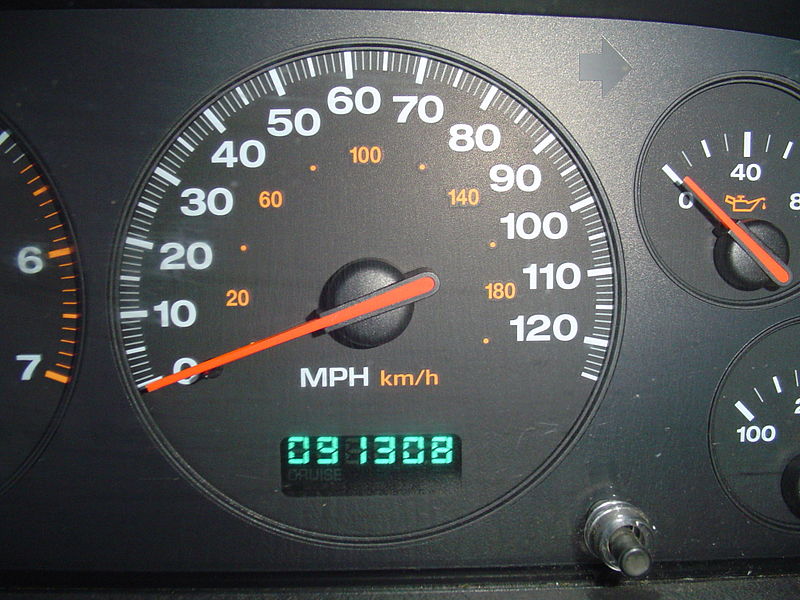
Automotive consumers shopping for a used vehicle rely on accurate odometer readings to help gauge a vehicle’s value. As the vehicle racks up miles, it develops more wear and tear requiring more maintenance to keep running, deprecating in value. This value depreciation is what leads unscrupulous used car dealers to tamper with odometer readings, misrepresenting a vehicle’s resale value. The National Highway Traffic Safety Administration (NHTSA) defines odometer fraud as the “disconnection, resetting or alteration of a vehicle’s odometer with the intent to change the number of miles indicated.” The NHTSA states more than 450,000 vehicles are sold in America with false odometer readings, costing American car consumers more than $1 billion each year.
More Americans are keeping their cars longer than ever before, according to an Automotive News article. The article states in 2016 the average age of an American vehicle is closer to 12 years; the highest it’s ever been. Part of that can be attributed to advancements in technology making vehicles last longer with regular maintenance, but also financial concerns have Americans looking to save money and make the cars they have last longer.
For more information on arbitration and other frequently asked odometer fraud questions, click here.
The type of mileage on the vehicle can also determine the amount of wear and tear on the vehicle and thus its resale value. Not every 100,000 miles is the same; highway travel with fewer starts and stops puts less wear on a vehicle than the conditions found in city driving.
Despite advancements in odometer technology, odometer fraud remains one of the most common automotive-related frauds perpetrated in the United States. Before the advent of digital technology, traditional odometers operated mechanically and could be manually rolled back with hand tools. This made tampering easy to spot with crooked, unevenly spaced numbers giving away the game. However even digital odometers can be easily tampered with using tools bought online for less than $100.
The Federal Odometer Law, also known as 49 U.S.C Chapter 327, protects American auto consumers from odometer fraud and enables prosecution of offenders when it takes place. The law, passed in 1972, prohibits the “disconnection, resetting, or alteration of a motor vehicle’s odometer with intent to change the number of miles indicated thereon.”
How to get a certified auto fraud lawyers? Contact Allen Stewart today.
Odometer fraud was further codified into federal law with the Truth in Mileage Act of 1986. This law forces car vendors to disclose a vehicle’s mileage accurately when transferring ownership of a vehicle.
This is accomplished via odometer disclosure statements shown when the consumer finalizes the purchase. These statements show the displayed mileage at the time of the sale and an affirmation from the vendor that the mileage shown is accurate and the buyer agrees. Odometer disclosures are required on all passenger vehicles, pickup trucks, motor homes, motorcycles, and trucks with a Gross Vehicle Weight Rating less than 16,000 pounds that are less than ten years old. Certain vehicles are exempt from odometer disclosures, including vehicles 20 years or older, vehicles with Gross Vehicle Weight Ratings over 16,000 pounds, snowmobiles, all-terrain vehicles, vehicles that are not self-propelled, or in the case of a title transfer in which at least one of the registered owners is staying the same, except when the title submitted is from out of state.
Odometer disclosure statements must show the odometer at the time and date of transfer. It must also show the year, make and model of the vehicle, the buyer’s name and address, and the signatures of both the buyer and seller. The disclosure must state whether the shown mileage is accurate, inaccurate, or is in excess of the odometer’s mechanical limits.

Federal rules changed on Jan. 1, 2021, mandating odometer disclosure statements for vehicles up to 20 years old. Previously the limit was up to 10 years. For example, a 2011 model year vehicle won’t be exempt from odometer disclosure until 2031.
If you think you have been a victim of odometer fraud, contact Allen Stewart. The consultation is free.
The penalties for odometer fraud include both civil liability and criminal charges. The law lets juries award remedies of $1,500 or triple damages, whichever is greater. The law also awards victorious plaintiffs their attorney’s fees.
Odometer fraud carries potential criminal penalties as well, as two Texas men discovered in April 2021. 61-year-old Nepthali Luna and 36-year-old Devon Luna of San Antonio pleaded guilty to conspiracy to make false odometer statements and commit securities fraud following an investigation of their car sales business. The Lunas admitted to selling high mileage used vehicles with incorrect mileage readings on the vehicles’ odometers titles and odometer disclosure statements. Court filings show the younger Luna purchased high-mileage vehicles and then caused those vehicles to show false, lower mileage before selling them for inflated prices.
The Lunas admitted, according to the DOJ statement, to selling 225 vehicles with “rolled back” odometers resulting in consumer losses surpassing $550,000. Nepthali Luna faces a maximum sentence of five years in prison, while his son Devon faces 10 years for securities fraud and three years for making false odometer statements.
Are you a victim of odometer fraud? Contact Allen Stewart today.
Odometer fraud can be more easily spotted when one knows the signs. A scratched dashboard and missing or loose screws can indicate someone accessed the instrument cluster to tamper with the odometer. Other signs can include worn gas or brake pedals uncharacteristic of a lower-mileage vehicle. Other components that can indicate higher wear include brake pads, tires, belts, flywheels, and similar parts.
Maintenance records can also indicate potential odometer fraud. If mileage notations in maintenance records and oil change records don’t match up with the displayed mileage, you may have a fraud problem. Reports such as CARFAX reports can also indicate mileage and help determine whether a discrepancy exists with the mileage.
If you believe your car dealer sold you a vehicle with incorrect mileage, contact the attorneys of Allen Stewart P.C. today. They don’t shy away from taking on bad actors in court and will fight to get you the justice you deserve. They work with you every step of the way, keeping you updated on the latest developments with your claim. If you need a lawyer for car problems, wait no longer. Contact the auto fraud lawyers of Allen Stewart P.C. today.
